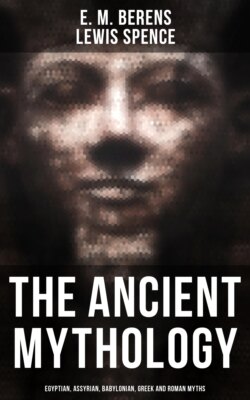Читать книгу The Ancient Mythology: Egyptian, Assyrian, Babylonian, Greek and Roman Myths - Lewis Spence - Страница 79
На сайте Литреса книга снята с продажи.
Gilgamesh as Tyrant
ОглавлениеNow we come to the real commencement of the poem, inscribed on a fragment which some authorities assign to the beginning of the IInd tablet, but which more probably forms a part of the Ist. In this portion we find Gilgamesh filling the double rôle of ruler and oppressor of Erech—the latter evidently not inconsistent with the character of a hero. There is no mention here of a siege, nor is there any record of the coming of Gilgamesh, though, as has been indicated, he probably came as a conqueror. His intolerable tyranny towards the people of Erech lends colour to this view. He presses the young men into his service in the building of a great wall, and carries off the fairest maidens to his court; he "hath not left the son to his father, nor the maid to the hero, nor the wife to her husband." Finally his harshness constrained the people to appeal to the gods, and they prayed the goddess Aruru to create a mighty hero who would champion their cause, and through fear of whom Gilgamesh should be forced to temper his severity. The gods themselves added their prayers to those of the oppressed people, and Aruru at length agreed to create a champion against Gilgamesh. "Upon hearing these words (so runs the narrative), Aruru conceived a man (in the image) of Anu in her mind. Aruru washed her hands, she broke off a piece of clay, she cast it on the ground. Thus she created Eabani, the hero." When the creation of this champion was finished his appearance was that of a wild man of the mountains. "The whole of his body was (covered) with hair, he was clothed with long hair like a woman. His hair was luxuriant, like that of the corn-god. He knew (not) the land and the inhabitants thereof, he was clothed with garments as the god of the field. With the gazelles he ate herbs, with the beasts he slaked his thirst, with the creatures of the water his heart rejoiced." In pictorial representations on cylinder-seals and elsewhere Eabani is depicted as a sort of satyr, with the head, arms, and body of a man, and the horns, ears, and legs of a beast. As we have seen, he is a type of beast-man, a sort of Caliban, ranging with the beasts of the field, utterly ignorant of the things of civilization.
Assyrian Type of Gilgamesh Found at Khorsabad
